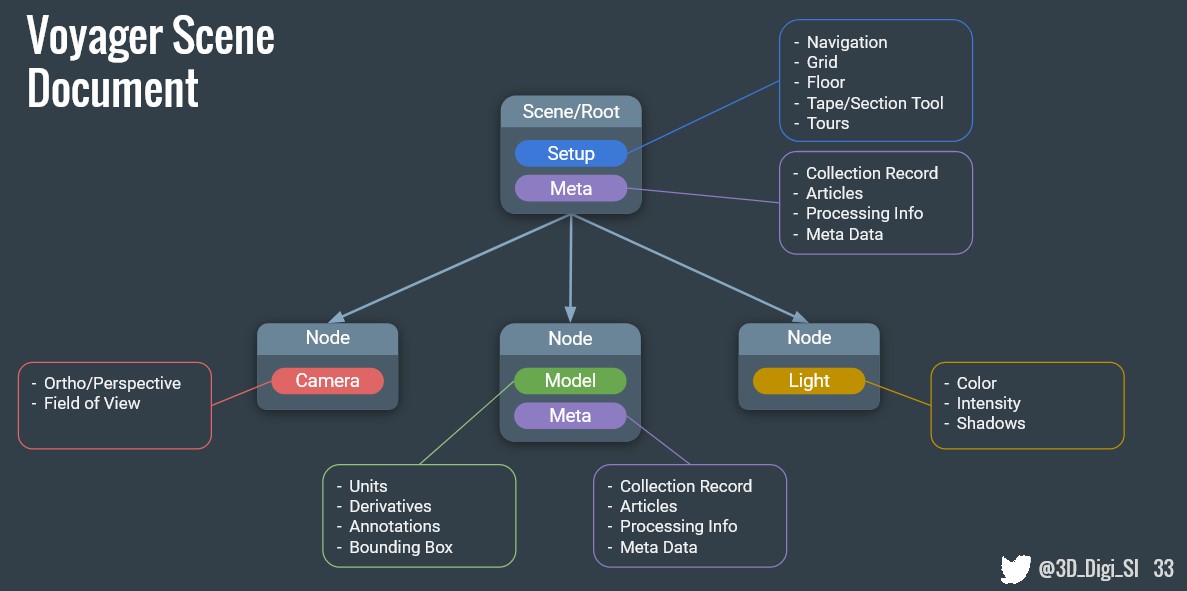The Voyager JSON Document Format (SVX)
Voyager Explorer (the viewer) and Voyager Story (the authoring tool) work with JSON scene description files. The structure of this custom file format is very similar to the well known and widespread glTF format. glTF is an industry standard for the transmission of 3D scenes on the web, including mesh, material, texture and animation data. While Voyager document files are not directly compatible with glTF, their data structure is similar enough to make it easy to read for developers experienced with glTF.
- More information about GLTF: https://github.com/KhronosGroup/glTF
Voyager documents use the specific extension .svx.json so they can be easily recognized and distinguished from other
.json files.
SVX stands for Smithsonian Voyager eXperience.
Scenes, Nodes, and Components
Both glTF and SVX describe 3D scenes using nodes. Each node has a name, and a location and orientation in 3D space. In SVX, each node contains a number of components. A component gives a node specific properties. SVX documents support the following component types:
- Camera
- Light (a light source; directional, point, and spot lights are supported)
- Model (an entity displayable in 3D space, including annotations)
- Meta (model and collection meta data, articles, media, etc.)
- Setup (scene setup information)
A node may contain multiple components. For example, a node may have both a model component (describing the 3D data to be displayed) and a meta component (describing the meta data for the model).



